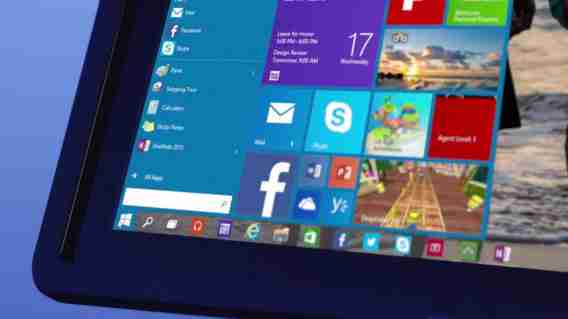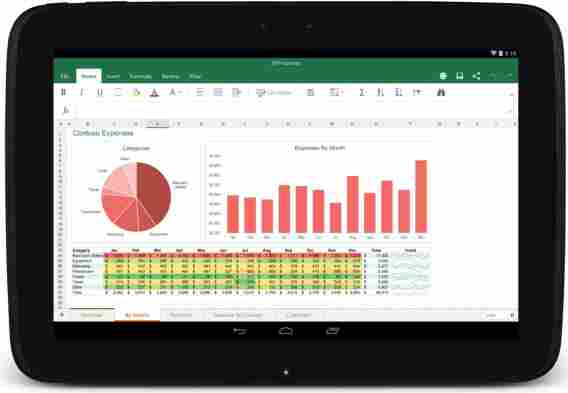Microsoft wants desperately to be taken seriously again. The company wants you to forget that Windows Phone is in a distant third place behind Android and iOS . It wants you to forget how confusing Windows 8 is or that Vista ever existed. This year, Microsoft is ready to step out of the shadows of Apple and Google.
2015 is already shaping up to be a big year for Microsoft. The company showed off more details about its upcoming Windows 10 operating system, which will unite its products under one operating system . Phones, tablets and computers will all be running the same operating system, making it easy for developers to create one app that works on hundreds of devices. Windows 10 will also go a long way to fixing the blunders in Windows 8 like confusing touch-focused controls and an unfamiliar Start Menu. More importantly, Microsoft is finally ditching the confusing Windows Phone moniker, unifying its products under one brand .

The reality of a ‘mobile-first, cloud-first’ company
Microsoft CEO Satya Nadella said that the company would become a “ mobile-first, cloud-first ” company and we’re seeing that vision come alive now. Windows 10 is going to be free for the first year for Windows 7 and Windows 8.1 users. Making Windows 10 free will entice users and developers to the platform. Windows is no longer Microsoft’s bread-and-butter product but a platform for its services .
Microsoft is also attacking mobile in a big way. Yesterday, the company released stable versions of Word , PowerPoint and Excel for Android after much testing. Our editor Chris Park gave Microsoft grief for charging for editing capabilities in Office for iPad but Microsoft recognized this mistake by making full use of the apps free . With powerful free productivity suites like Google Docs, it’s difficult to convince a consumer to pay for Office.

Outlook bests Gmail on iOS
Embarrassingly for Google, Microsoft released its first version of Outlook for iOS yesterday and it’s miles ahead of Google’s Gmail for iOS . Gmail for iOS is slow, buggy and pales in comparison to its Android counterpart. Google has left Gmail for iOS to rot; the app hasn’t been updated since October 2014 . Outlook for iOS blew me away with its mail, calendar and contacts integration that doesn’t feel overwhelming (which can’t be said for the Outlook desktop app).
Outlook for iOS has a unified inbox that separates your email into sections called Focused and Other . Mail in the Focused section automatically filters out crud like promotional emails and social media updates. It’s a lot less complicated than Google Inbox’s bundles and makes sure you see the most important emails first. You can also view your flagged and unread emails in the Quick Filters section. You can also browse for files to attach to emails from services like Box , Dropbox and OneDrive .
Outlook for iOS even lets you snooze your email to read later by swiping right on a message. You can choose from preset times or create a custom time. The only thing missing is a to-do feature, which already exists in the Outlook for the desktop.
While Outlook is mostly used for businesses that require Microsoft Exchange, Outlook for iOS supports Exchange, Outlook.com, Gmail, Yahoo, and iCloud. In the past, Microsoft wouldn’t have ever considered supporting all these competitor services in hopes that consumers would live inside their ecosystem. It seems Microsoft sees the error of its ways and has become less heavy-handed in trying to force users to use its services .
An enemy of an enemy is a friend
Microsoft obviously sees Google as a threat so it’s taking the fight to where it’ll hurt Google the most: Android. A report from The Wall Street Journal revealed that Microsoft will be taking part in a $70 million investment round in Cyanogen, the company that created the CyanogenMod fork of Android. Although Cyanogen is based on Android, it only takes the open source parts of the operating system and removes Google from the equation . It’s like how Amazon forked Android to create its line of Kindle Fire tablets. For Microsoft, an enemey of an enemy is a friend.
With Google implementing stricter control over the design and distribution of apps within its Google Play Store, Cyanogen could be a viable alternative for phone manufacturers who want to include their products and services instead of Google’s. Of course, any fork of Android can provide this platform, not just Cyanogen. However, Cyanogen has been gaining a lot of traction as the default operating system on the budget OnePlus One phone.
Photo credit: Maurizio Pesce via Flickr
Going on the offensive
Microsoft still has a lot of work to do to sway Android and iOS users. The company has to convince users why its ecosystem is better than Apple’s or Google’s. At the moment, Microsoft’s ecosystem is incomplete. Ironically, Windows 10 for phones will be the last of the big three mobile platforms to get native Office apps. Expect to see Office for Windows 10 for phones later this year. 2015 is just the beginning for Microsoft’s revival and it’ll be interesting to see if the company’s vision pays off.
Related Stories
App of the Week: Dubsmash
How to use WhatsApp in a web browser
Windows 10 will be free for Windows 7 and 8.1 users for one year
Follow me on Twitter: @lewisleong
